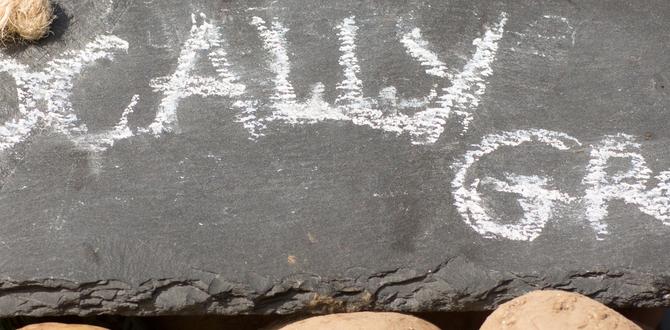Basque Country nightlife for non-party travelers is less about loud clubs and more about savoring delicious food, enjoying local drinks, and soaking in authentic cultural experiences in vibrant pintxo bars and charming tavernas. It’s about relaxed evenings filled with great company and delicious discoveries.
Planning a trip to the Basque Country and wondering about its nightlife? You might picture bustling dance floors and thumping music, but that’s just one piece of the picture! For travelers who prefer a more relaxed evening, the Basque Country offers a truly special experience. It’s about discovering local flavors, connecting with friendly people, and enjoying the beautiful ambiance of its towns and cities after dark. Forget the overwhelming party scene; we’re diving into a world of sophisticated enjoyment. This guide will show you how to experience the Basque Country’s evenings, deliciously and comfortably.
Unlocking the Charm: Basque Country Nightlife Beyond the Clubs
The Basque Country, a region nestled in the north of Spain and southwest of France, is famed for its unique culture, stunning coastline, and, of course, its incredible culinary scene. When we talk about its nightlife, it’s crucial to understand that “party” here often means something a little different. Instead of sprawling nightclubs, think of intimate, buzzing pintxo bars, lively plazas, and relaxed gastropubs. The focus is on connection, conversation, and the sheer pleasure of good food and drink.
This approach to evening enjoyment is rooted in Basque culture. The tradition of “ir de pintxos” (going for pintxos) is a social ritual. It involves hopping from one bar to another, sampling small, artfully prepared bites (pintxos) and enjoying a glass of local wine or cider. This is where the heart of Basque social life beats after sunset. For travelers who value authentic experiences over loud, crowded venues, this is an absolute treat. It’s a chance to mingle with locals, try an incredible variety of flavors, and feel truly immersed in the regional way of life. Even if you’re traveling with specific needs, like seeking comfort and ease, this style of nightlife is exceptionally accommodating and can be enjoyed at your own pace.
Let’s explore how you can navigate and embrace the relaxed yet vibrant nightlife of the Basque Country, ensuring a memorable and comfortable experience for every traveler.
The Heart of the Evening: Pintxos and Txakoli
If there’s one activity that defines Basque evening culture for the non-party traveler, it’s the “pintxo” crawl. Pintxos are not just snacks; they are miniature culinary masterpieces, each bar offering its own unique creations. Paired with local beverages, they create an unparalleled social and gastronomic experience.
What Exactly Are Pintxos?
Pintxos (or pinchos in Spanish) are small bites, often served on a slice of bread, held together with a toothpick. They are an evolution of tapas, but with a distinct Basque flair for presentation and flavor. You’ll find everything from simple anchovies on bread to elaborate creations like foie gras, local cheeses, fresh seafood, and slow-cooked meats, all elevated to an art form.
The Pintxo Ritual: “Ir de Pintxos”
The magic of pintxos lies in moving between bars, or “ir de pintxos.” It’s a leisurely, social affair. You might visit three to five bars in an evening, enjoying one or two pintxos and a drink at each. This allows you to:
- Experience a wider variety of flavors and bar atmospheres.
- Engage in conversation with friends or strike up chats with locals.
- Enjoy the evening at a relaxed pace, without feeling rushed.
- Discover different neighborhoods and their unique charm.
Must-Try Basque Drinks to Accompany Your Pintxos:
No pintxo experience is complete without the right beverage. The Basque Country boasts some distinctive local drinks:
- Txakoli (Chacoli): This is the quintessential Basque white wine. It’s slightly effervescent, dry, and incredibly refreshing. Traditionally, it’s poured from a height to aerate it, creating a soft foam. It pairs wonderfully with seafood pintxos.
- Cider (Sidra): Basque cider is dry, tart, and made from local apples. It’s often drunk in cider houses (sagardotegiak), particularly in rural areas, but you can find it in many bars. The traditional pour involves a very precise height to aerate the cider and enhance its flavor.
- Rioja Alavesa Wines: The southern part of the Basque Country is part of the famous Rioja wine region. You’ll find excellent red wines here, perfect for pairing with heartier pintxos.
- Kalimotxo: A simple but popular drink, especially among younger crowds, made from equal parts red wine and cola. Sweet and refreshing.
For travelers seeking comfort and convenience, the pintxo bar culture is ideal. You can easily find accessible venues, and the ability to move at your own pace makes it stress-free. If you have specific needs for comfort or discretion during your travels, selecting a bar with ample seating and considering your personal needs beforehand will ensure a pleasant experience. For instance, planning your route to include places with accessible restrooms can add an extra layer of ease.
Exploring Different Basque Cities: Nightlife Vibe by Location
While the spirit of relaxed evening enjoyment is shared across the Basque Country, each major city offers a unique flavor to its nightlife.
Bilbao: The Urban Explorer
Bilbao, the region’s largest city, offers a sophisticated urban nightlife. The areas around the Guggenheim Museum and the Ensanche district are brimming with modern pintxo bars and chic cocktail lounges. You’ll find a lively atmosphere, especially on weekends, but it generally remains more about quality ambiance than rowdiness.
- Casco Viejo (Old Town): This historic quarter is packed with traditional pintxo bars, each with its own character. It’s a maze of narrow streets, perfect for a spontaneous crawl.
- Gran Vía and Ensanche: Here you’ll find more contemporary establishments, stylish bars, and places offering sophisticated drinks alongside modern pintxos.
- Ría de Bilbao: Areas along the revitalized riverfront offer trendy spots with great views and a relaxed vibe.
San Sebastián (Donostia): The Culinary Capital
San Sebastián is arguably the pinnacle of Basque gastronomy, and its nightlife reflects this. The Old Town (Parte Vieja) is a must-visit for its dense concentration of world-class pintxo bars. Evenings here are a delightful culinary journey, often starting after dinner around 9 or 10 PM.
- Parte Vieja (Old Town): This is the epicenter for pintxo lovers. Streets like Calle 31 de Agosto become vibrant social hubs. Prepare for crowds, but the quality of food is outstanding.
- Gros: A more relaxed and local neighborhood known for its beaches and a growing number of excellent pintxo bars and craft beer pubs.
- Centro: Offers a mix of traditional and modern bars, often a bit more upscale than the Old Town.
Vitoria-Gasteiz: The Local’s Choice
Vitoria-Gasteiz, the capital, offers a more laid-back and local experience. Its nightlife is centered around its beautiful medieval quarter and the Ensanche district. It’s a great place to experience authentic Basque life without the overwhelming tourist crowds found in other cities.
- Casco Medieval: Similar to Bilbao’s Old Town, this area is rich with history and traditional pintxo bars.
- Ensanche: Features a good selection of bars and cafes that stay open late, popular with locals.
When choosing where to explore, consider your personal preferences for atmosphere. If accessibility is a significant concern, research venues beforehand. Many modern establishments in Bilbao and San Sebastián are designed with accessibility in mind, featuring ramps or elevators. For those managing specific personal care needs, knowing that you can find comfortable seating and accessible facilities in many of these refined bar settings can make all the difference in enjoying a stress-free evening.
Beyond Pintxos: Other Ways to Enjoy Basque Evenings
While pintxos are a major draw, the Basque Country offers other delightful ways to spend your evenings, catering to a variety of tastes and comfort levels.
Traditional Music and Dance
In smaller towns and during local festivals, you might stumble upon spontaneous gatherings featuring traditional Basque music and dance. Look for events advertised in local plazas or ask your accommodation for recommendations. It’s a wonderfully authentic and often very welcoming experience.
Cafes and Terraces
Many Basque cities have charming cafes that remain open into the evening, offering a relaxed atmosphere to enjoy a coffee, tea, or a glass of wine. Sitting on a terrace in a lively plaza, watching the world go by, is a quintessential European experience and a perfect way to unwind.
Gastronomic Societies (Txokos)
While these private, often male-only social clubs are not generally open to the public, some might host special events or have associate memberships that allow visitors. They represent the deep-rooted culture of communal dining and socializing. It’s worth inquiring, though entry is rare for casual visitors.
Quiet Evenings with Local Culture
For a truly mellow evening, consider simply enjoying a leisurely dinner at a restaurant that specializes in traditional Basque cuisine (like hearty stews or grilled fish). Follow this with a quiet stroll through the illuminated streets of a historic town or along the waterfront. This is often more fulfilling than searching for a “party” that doesn’t align with your travel style.
Accommodating Specific Travel Needs
For travelers requiring specific comfort items, such as adult or child diapers, the relaxed nature of Basque evening activities is a significant advantage. Pintxo bars, cafes, and restaurants typically have accessible restrooms. Planning ahead by identifying venues with these facilities can greatly enhance your comfort and peace of mind. Many pharmacies (farmacias) in larger towns will stock a range of personal care items, ensuring you can easily find what you need without disrupting your evening plans. Understanding and preparing for these personal needs allows you to fully immerse yourself in the cultural experiences without worry.
Practical Tips for a Comfortable Basque Night Out
To ensure your evening explorations are as enjoyable and stress-free as possible, a little preparation goes a long way. Even for the most independent traveler, a few practical tips can make a significant difference.
Timing is Key
Basque culture tends to dine and socialize later than many other parts of the world. Dinner typically starts around 9 or 10 PM, and pintxo hopping usually picks up after that. Don’t expect places to be bustling before 8 PM.
Embrace the Walk (and Public Transport)
Most of the best nightlife areas in Basque cities are pedestrian-friendly and easily navigable on foot. If you’re staying further out or have mobility concerns, familiarize yourself with local public transport, which is generally efficient.
- Buses: Available in all major cities and connect smaller towns.
- Trams: Bilbao has a modern tram system that is very useful for getting around the city center and along the river.
- Taxis/Ride-Sharing: Readily available, especially in larger cities.
Stay Hydrated (and Pace Yourself)
It’s easy to get caught up in the joy of diverse flavors. Remember to drink plenty of water between alcoholic beverages, especially if you’re on the move. This helps you enjoy your evening to the fullest and feel your best the next day.
Learn a Few Basic Phrases
While English is widely spoken in tourist areas, knowing a few Basque or Spanish phrases like “Kaixo” (Hello), “Eskerrik asko” (Thank you), “Por favor” (Please), and “La cuenta, por favor” (The bill, please) can go a long way in fostering positive interactions.
Consider Your Comfort Needs
If you require specific items for comfort, such as adult diapers or child diapers, plan your outings. Many bars have restrooms, but their accessibility can vary. Researching or choosing larger, more modern establishments can offer better facilities. Packing a small, discreet travel kit with essentials can provide peace of mind, allowing you to focus on enjoying the experience. Remember that pharmacies are accessible for replenishing supplies as needed.
According to the National Center for Biotechnology Information (NCBI), comfortable travel significantly improves overall travel satisfaction, particularly when managing personal care needs. Planning for these can transform a potentially stressful situation into one of ease, allowing for genuine enjoyment of cultural activities.
Know Your Limits and When to Head Back
The most important tip is to listen to your body. The beauty of Basque nightlife for non-party travelers is its flexibility. There’s no pressure to stay out late or keep up with anyone. When you feel ready to return to your accommodation, do so comfortably and safely. Most cities are safe, but it’s always wise to be aware of your surroundings.
Table: Pintxo Bar Etiquette & What to Expect
Navigating a new cultural experience can sometimes feel daunting. Here’s a quick guide to help you feel more at ease in Basque pintxo bars:
| Aspect | What to Expect / How to Do It | Tips for Non-Party Travelers |
|---|---|---|
| Ordering | At the bar, point to the pintxos you want or ask the bartender. For hot pintxos, you might order from a menu. | Don’t hesitate to ask for recommendations. Bartenders are usually happy to help. |
| Payment | It’s common to pay at the end of your visit, especially if you’re ordering multiple rounds. Keep your empty plates and glasses visible. | Be ready to settle your tab when you decide to leave. Most places accept cards. |
| Crowds | Bars, especially in San Sebastián’s Old Town, can get very crowded. | Patience is a virtue. If it’s too much, move to a less crowded spot or try a different time. |
| Pace | It’s perfectly acceptable to have one or two and move on. This is central to “ir de pintxos.” | This pace is ideal. It allows you to sample without overdoing it and minimizes any discomfort from staying too long in one place. |
| Noise Level | Expect a lively, conversational buzz. It’s rarely ‘loud music’ noisy, but rather a hum of social interaction. | The ambient noise can be pleasant, providing a backdrop for conversation rather than being intrusive. |
| Variety | Each bar offers a unique selection. Some specialize in seafood, others in meat, and some are known for their creative, modern dishes. | This diversity is a major plus. You can curate your tasting menu based on your preferences and dietary needs. |
FAQ: Your Nightlife Questions Answered
Q1: Is Basque Country nightlife only about loud clubs and bars?
A1: Absolutely not! While clubs exist, the heart of Basque nightlife for most travelers, especially those who prefer a relaxed experience, revolves around vibrant pintxo bars, cozy tavernas, and social gatherings focusing on excellent food and drink.
Q2: When is the best time to go out for pintxos?
A2: Evenings tend to start later here. Pintxo bars usually get lively from around 8 PM onwards, with peak times between 9 PM and 11 PM. Many locals enjoy a late dinner around 10 PM.
Q3: What if I have dietary restrictions or need specific comfort items like adult diapers?
A3: Basque Country is quite accommodating. Many pintxo bars offer a variety of options, and you can easily find restaurants with diverse menus. For personal care needs, most modern venues have accessible restrooms. Carrying a small, discreet kit can ensure comfort, and pharmacies are readily available for supplies.
Q4: Do I need to speak Spanish or Basque to enjoy the nightlife?
A4: While knowing a few phrases is helpful and appreciated, it’s not essential. In tourist areas and popular pintxo bars, many people speak English, and pointing and smiling are universal languages!
Q5: How many pintxos should I eat at one place?
A5: It’s customary to have just one or two pintxos and a drink at each bar before moving on to the next. This allows you to sample more variety and enjoy the social aspect of “ir de pintxos.”
Q6: Are pintxo bars expensive?
A6: Pintxos are generally affordable, with prices typically ranging from €2 to €4 each. A night of hopping between bars sampling various items can be a very cost-effective and delicious way to experience local cuisine.
Q7: What’





